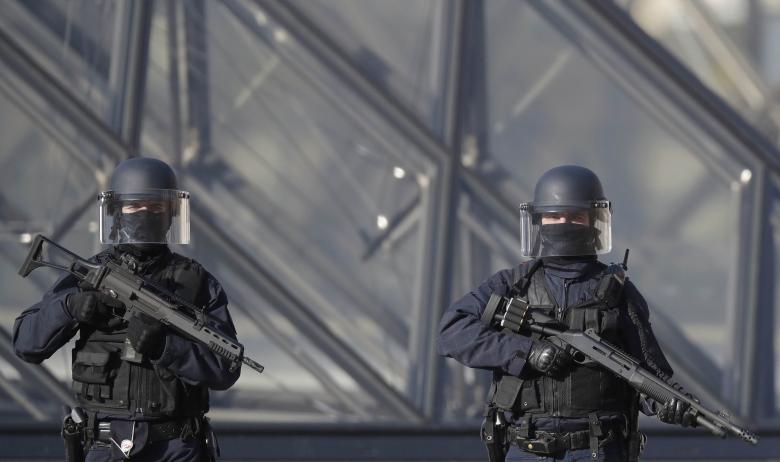Earlier this morning, a knife wielding man attacked French security personnel guarding the entrance to the Louvre. He was reportedly subdued only after non-lethal means failed to stop the threat, and shots were fired.
The attacker, whose identity and motivation remains unclear, was seriously injured.
French soldiers have been deployed to major tourist destinations and government buildings throughout France following the string of Islamic extremist attacks in their country over the last two years, which have claimed the lives of 237 French citizens and others.
Knife attacks do not have the capability to produce mass casualties in the style of the Bataclan Massacre, or the Charlie Hebdo murders, but they are cheap, easy to plan, and surprisingly effective in achieving terrorist goals.
While criminal attacks with knives or other hand-held weapons are nothing new, knife attacks as a means to execute terrorist violence have been increasing in popularity across continents and ideologies.
Most notably, the 2014 Kunming knife attack in China showed the level of damage that can be inflicted by a group of organized and coordinated terrorists using only simple edged weapons. Muslim terrorists from the Uyghur ethnic group were blamed for killing 31 people in a coordinated assault on a train station.
In 2015, a wave of violence in Israel was conducted primarily with blades and other unconventional weaponry. According to the Washington Post, between October 2015 and September 2016, there were 86 stabbings, 57 attempted stabbings, and 31 car attacks inside of Israel and the Palestinian territories. Compare that to 20 shootings, and only 4 bomb attacks during the same period.
The attacks are usually carried out at moments of opportunity by individuals, not groups, and with little to no prior planning. This trend is in line with the style of ‘home-grown’ terror attacks linked to ISIS in the U.S.
In November 2016, Abdul Razak Ali Artan conducted an attack on the campus of the Ohio State University using a combination of vehicular assault, followed by what was likely an attempted stabbing spree. A police officer shot and killed Artan before he was able to kill anyone. ISIS claimed responsibility for the attack.
Using vehicles as weapons is also a new and highly effective tactic, in line with an overall trend favoring unconventional means. The July 2016 attack in Nice, conducted using a refrigerator truck, killed 84 people. The recent Berlin market attack, also using a commercial truck, killed 12.
Security personnel the world over have their work cut out for them, as attacks using legal and easily acquired tools are extremely difficult, if not impossible, to defeat. This is also a further indication that individuals, not law enforcement, will ultimately be responsible for protecting themselves and their loved ones.
Already have an account? Sign In
Two ways to continue to read this article.
Subscribe
$1.99
every 4 weeks
- Unlimited access to all articles
- Support independent journalism
- Ad-free reading experience
Subscribe Now
Recurring Monthly. Cancel Anytime.
Featured image courtesy of Wall Street Journal









